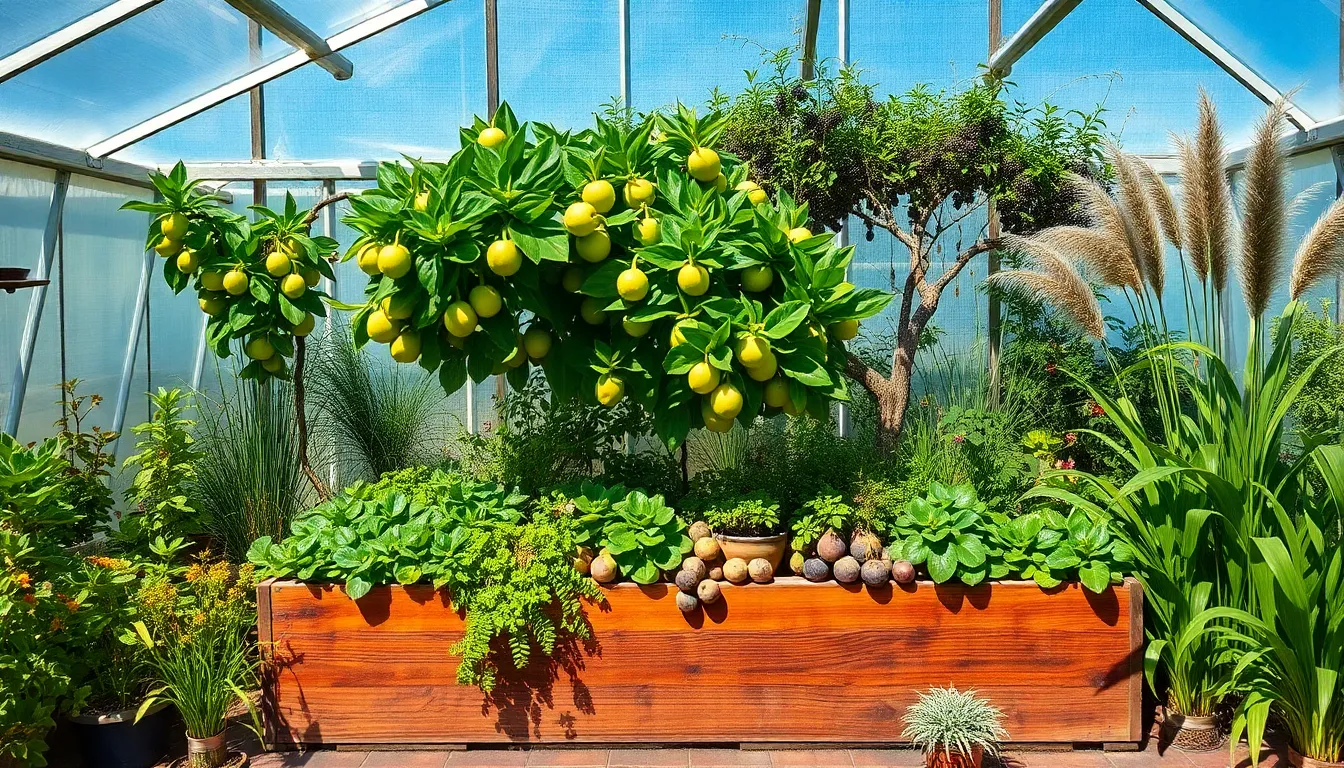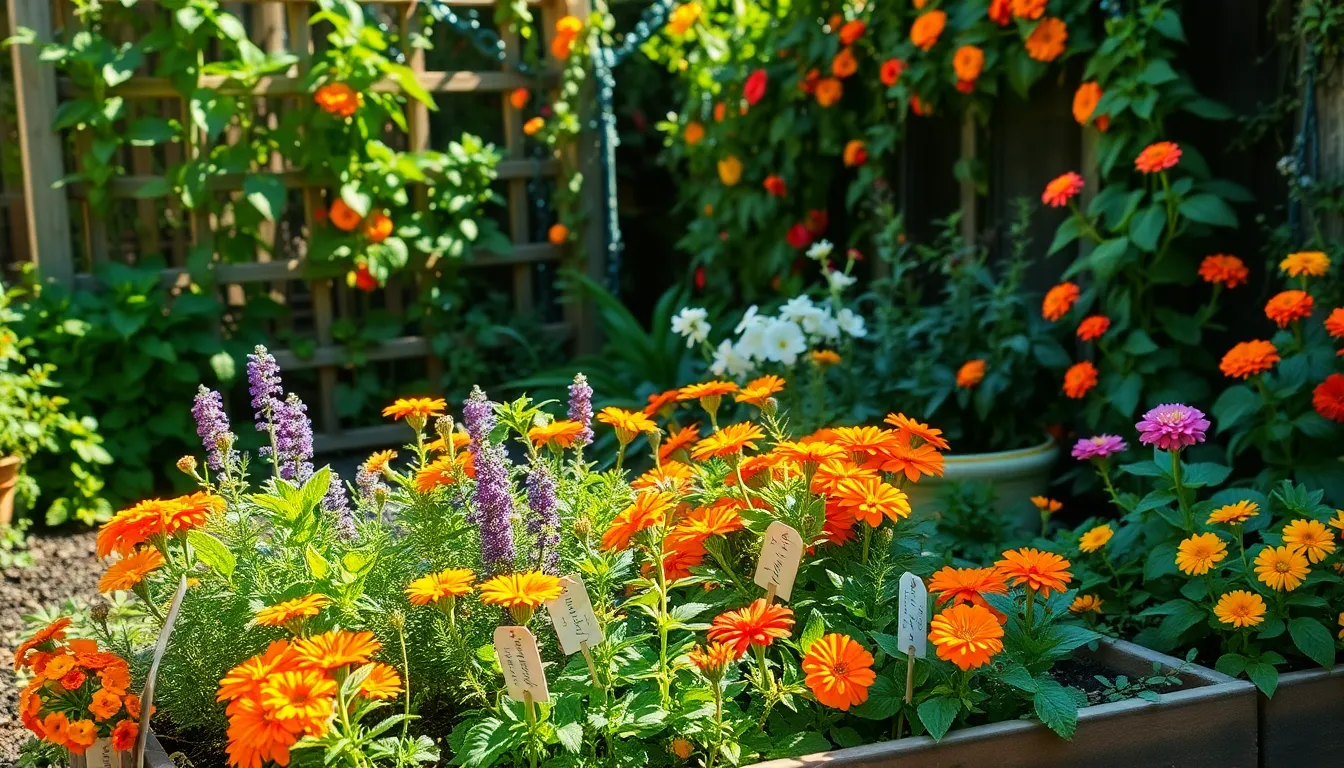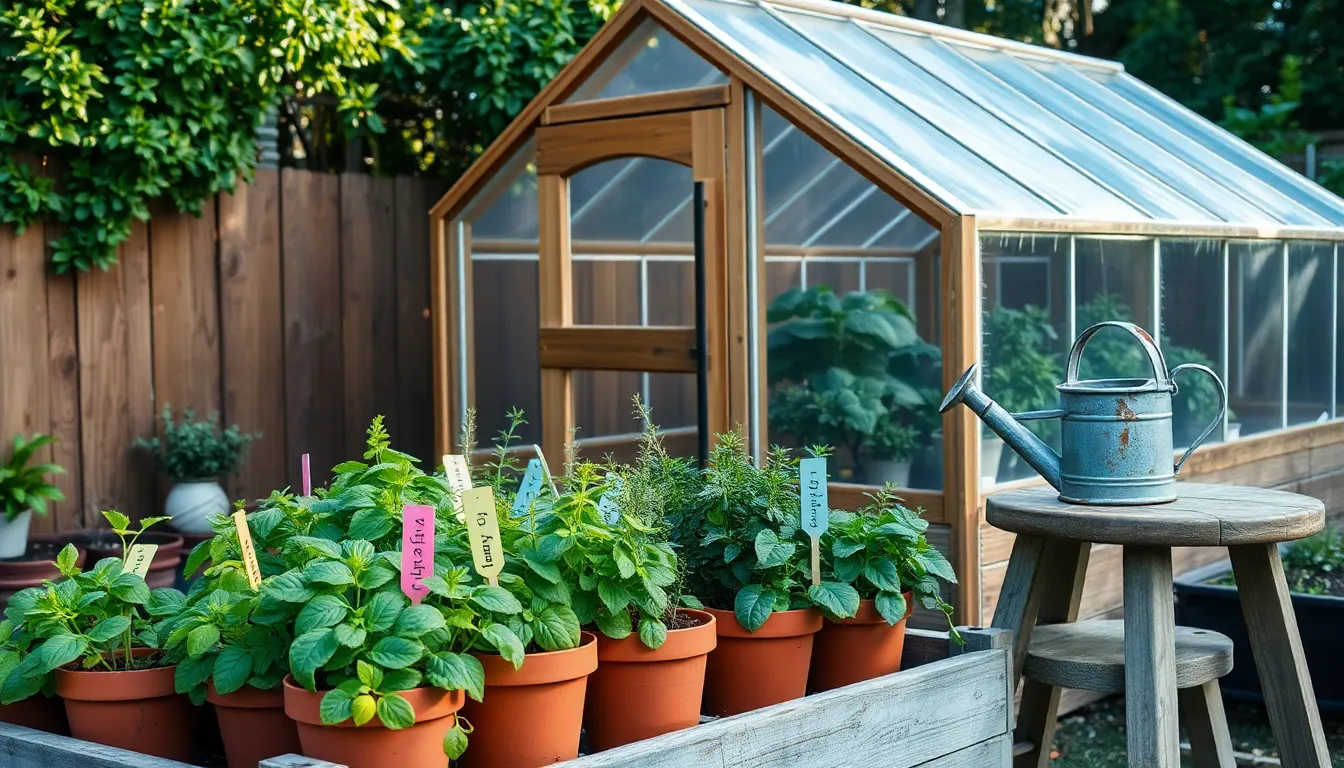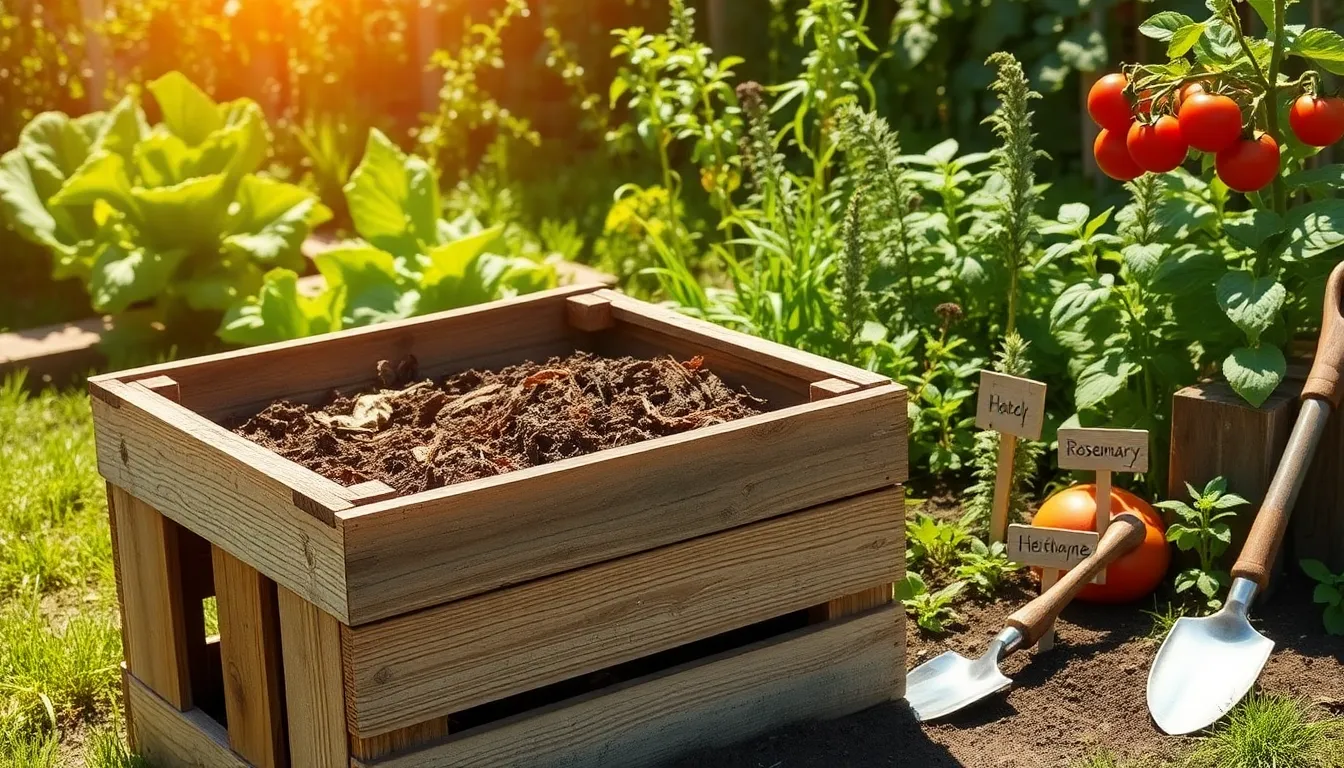Imagine stepping into your garden and plucking a sun-ripened fruit, knowing that it flourished with minimal water. In today’s world, where water conservation is more crucial than ever, creating a bountiful fruit garden that thrives with less is not only possible but wonderfully rewarding. Whether you’re just planting your first seeds or have soil-stained hands from years of gardening, embracing a low-water fruit garden can transform your space into a sustainable oasis. This approach isn’t just about saving resources—it’s about cultivating resilience and abundance in your own backyard.
In this article, we’ll explore ten inspiring ideas for growing delicious, low-water fruits that will delight your palate and ease your watering chores. You’ll discover how to select drought-tolerant varieties, design efficient watering systems, and use mulching techniques to retain moisture. Each idea presented here is crafted to empower you, whether you’re nurturing a small patio garden or expanding a sprawling landscape. As you read on, you’ll find that cultivating a low-water fruit garden is not only an environmentally friendly choice but a joyful and accessible practice for all.
Understanding Low-Water Fruit Varieties
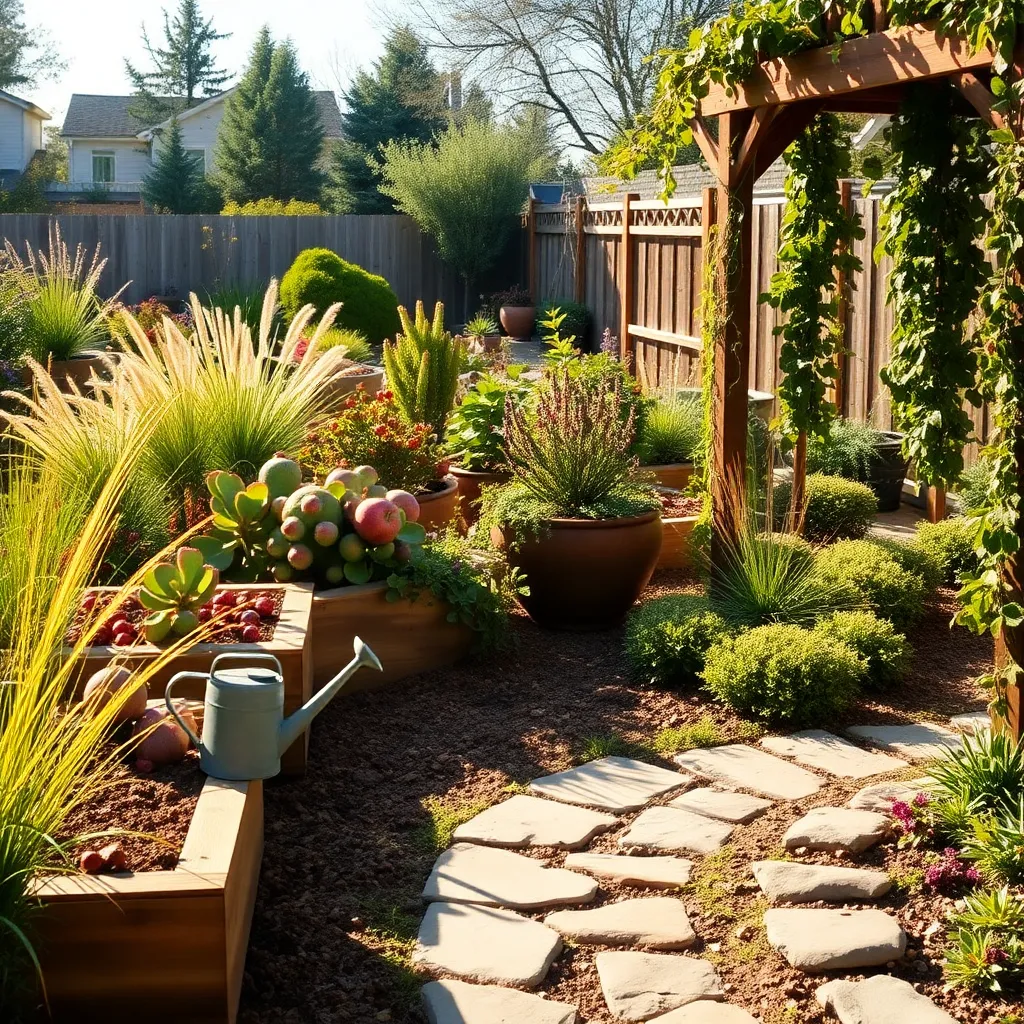
Embracing low-water fruit varieties can significantly reduce your garden’s water consumption while still providing a bountiful harvest. These varieties are specially adapted to thrive in drier conditions, making them ideal for regions with limited rainfall or water restrictions.
To succeed with low-water fruits, it’s essential to focus on soil preparation. Amend the soil with organic matter like compost to improve moisture retention and provide essential nutrients.
Avoid frequent shallow watering; instead, practice deep watering techniques. This encourages roots to grow deeper, increasing drought resilience and nutrient uptake.
Consider planting fruits such as pomegranates, figs, and goji berries, which are known for their drought tolerance. These varieties not only conserve water but also add diversity and unique flavors to your garden.
- Pomegranates: Require full sun and thrive in well-drained soil; water deeply every two to four weeks.
- Figs: Prefer a sunny spot and sandy loam soil; water every three to four weeks once established.
- Goji Berries: Adapt well to various soil types; water weekly until established, then reduce to every two weeks.
Implementing mulching techniques can further reduce water needs by minimizing evaporation and maintaining soil temperature. Use organic mulches like straw or wood chips to create a protective barrier around your plants.
For advanced gardeners, try incorporating rainwater harvesting systems to make the most of natural precipitation. This sustainable practice not only supplements your garden’s water supply but also reduces dependency on municipal sources.
Designing a Water-Efficient Layout
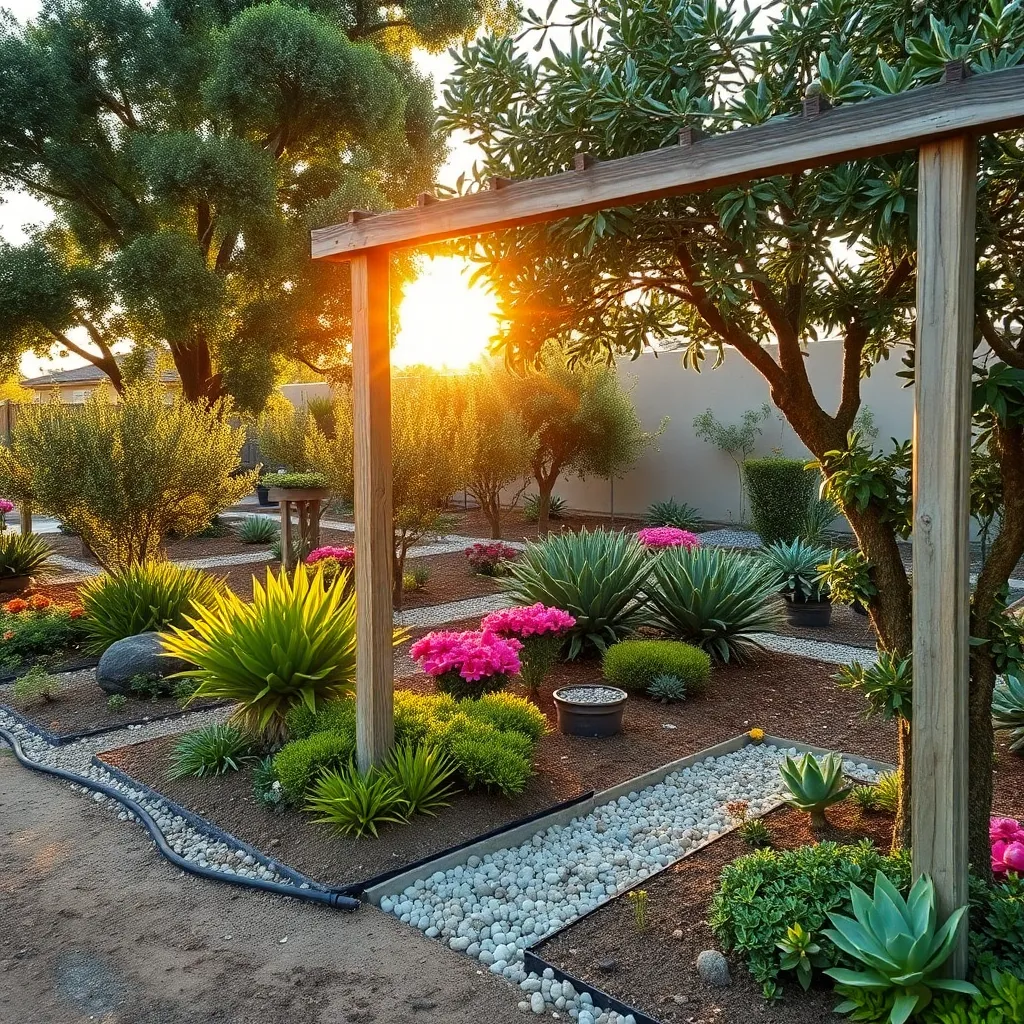
Creating a water-efficient garden layout involves carefully considering plant placement to maximize water retention. Begin by grouping plants with similar water needs together, which helps streamline your watering efforts and prevents overwatering.
Position fruit trees and shrubs that require less water at the highest points of your garden to take advantage of natural drainage. This simple technique ensures that water flows down to more thirsty plants, allowing you to use every drop efficiently.
Utilize mulch generously around your plants to help retain moisture and keep the soil temperature consistent. Organic mulches like straw or wood chips not only conserve water but also enrich the soil as they decompose, providing a dual benefit.
For advanced gardeners, consider implementing a drip irrigation system to target water directly to the plant roots. This method significantly reduces evaporation and ensures that your plants receive the precise amount of water they need, leading to healthier growth.
Choosing Drought-Resilient Fruit Trees
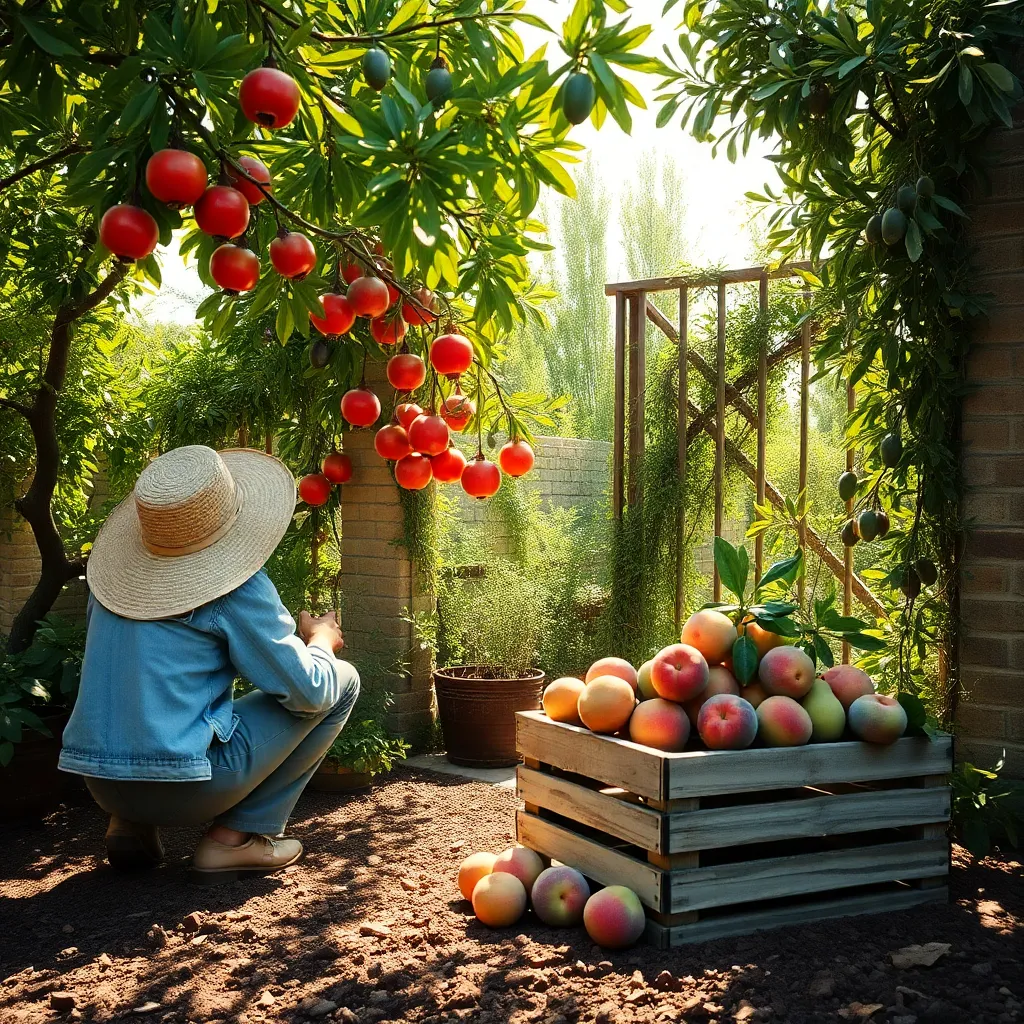
For gardeners looking to conserve water while still enjoying homegrown fruit, choosing the right drought-resilient fruit trees is essential. Varieties like fig, olive, and pomegranate trees are excellent options due to their ability to thrive in dry conditions.
When selecting a location for your drought-resilient fruit trees, ensure they receive full sun exposure, ideally 6-8 hours a day. Proper site selection not only optimizes fruit production but also reduces the need for frequent watering.
Soil preparation is crucial for these trees to flourish; they prefer well-draining soil with a slightly acidic to neutral pH. Amending the soil with organic matter, such as compost, can improve its water retention capabilities and provide essential nutrients.
Watering should be done deeply but infrequently, encouraging the trees to develop deep root systems. As a rule of thumb, water thoroughly every two to four weeks depending on rainfall and soil conditions, ensuring the water reaches the root zone.
For advanced gardeners, consider implementing a drip irrigation system to deliver water directly to the roots, minimizing evaporation and water waste. This method is highly efficient and helps maintain consistent moisture levels, which is key for the trees’ health and productivity.
Incorporating Mulching for Moisture Retention
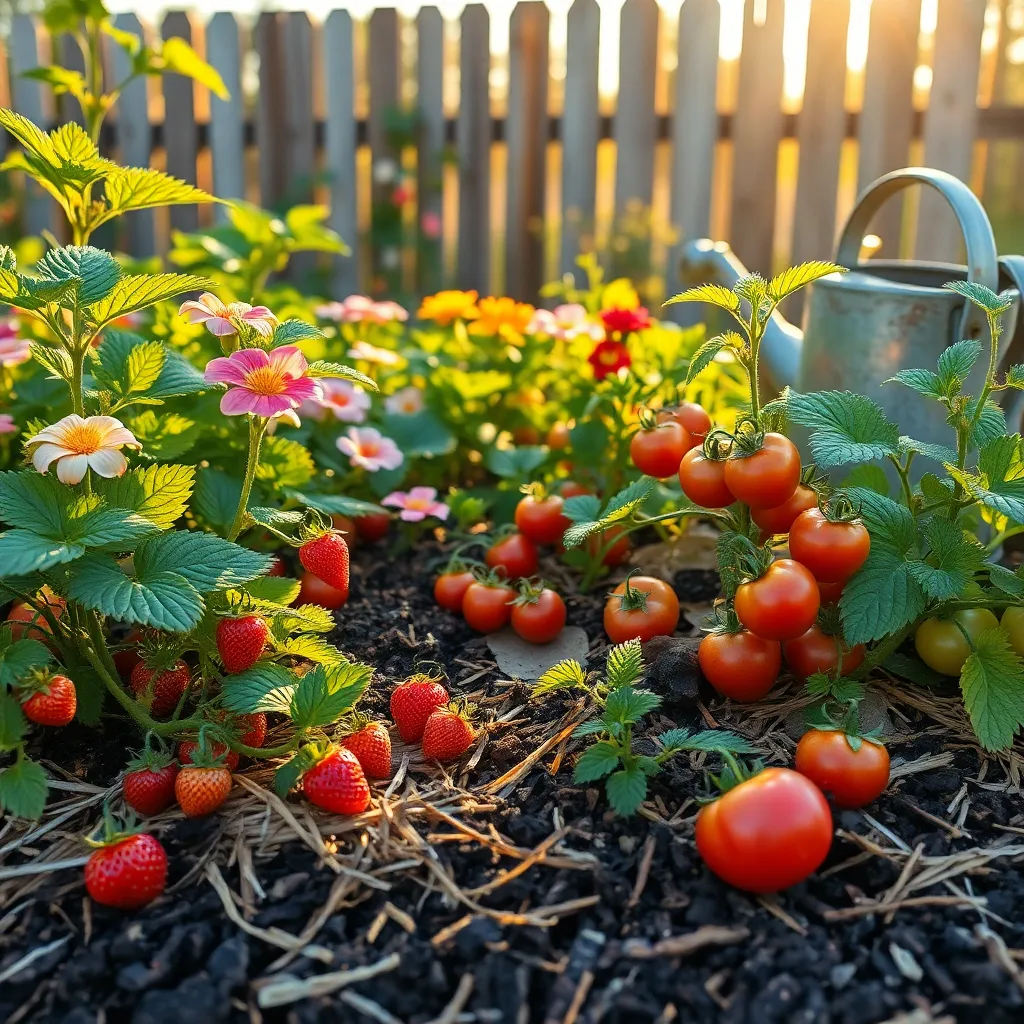
Mulching is a powerful technique to help retain moisture in your fruit garden, especially in low-water conditions. By covering the soil with organic materials like straw, wood chips, or shredded leaves, you reduce evaporation and maintain a consistent soil temperature.
For beginners, consider using a mulch layer that is about 2 to 4 inches thick. This thickness helps prevent weeds while allowing water to penetrate through to the roots effectively. Ensure the mulch does not touch the trunk of your fruit trees, as this can cause rot and invite pests.
Advanced gardeners can experiment with different mulch materials to suit specific fruit trees. For instance, using pine needles for blueberries can enhance the soil’s acidity, which these plants prefer. It’s also beneficial to replenish the mulch layer annually to maintain its effectiveness.
During hot months, monitor the moisture levels under your mulch by sticking a finger into the soil. If it feels dry beyond the first inch, it’s time to water even if the mulch appears damp on the surface. Remember, proper mulching doesn’t eliminate the need for watering; it optimizes the water you do provide.
Utilizing Drip Irrigation Systems
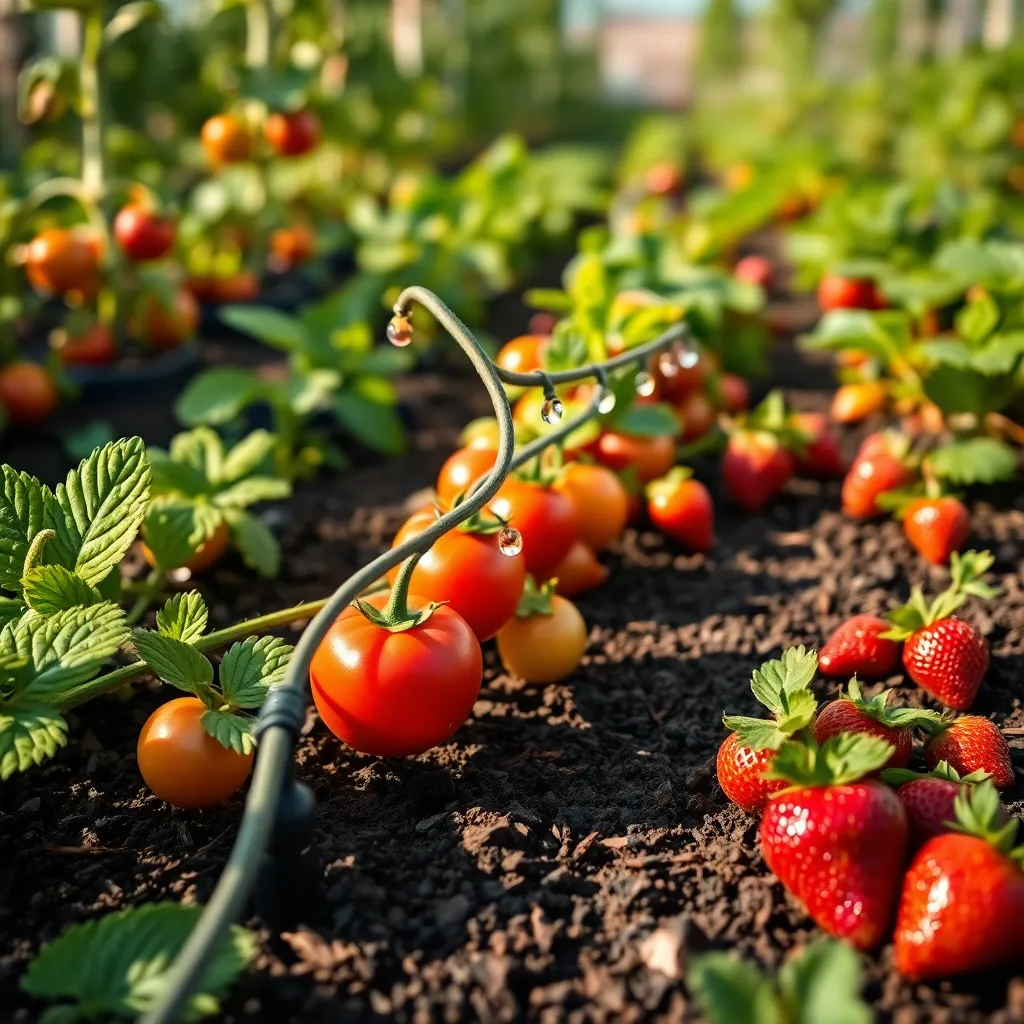
Drip irrigation systems are an excellent choice for gardeners looking to conserve water while ensuring their fruit plants receive adequate hydration. These systems deliver water directly to the root zone of plants, minimizing evaporation and runoff—a perfect setup for dry climates or water-restricted areas.
Begin by installing a basic drip irrigation kit, which typically includes tubing, emitters, and connectors. As a beginner, ensure the emitters are spaced appropriately to match the layout of your fruit plants, allowing for consistent moisture delivery to each plant’s root area.
For more advanced gardeners, consider using a timer to automate watering schedules and further optimize water use. By setting the system to water in the early morning or late evening, you maximize absorption and minimize evaporation, which is crucial during hot weather.
Regularly check the emitters for clogs, especially if using well water or water with high mineral content. Clean or replace any blocked parts promptly to maintain an efficient system that ensures every plant receives the necessary moisture to thrive.
Companion Planting for Water Conservation
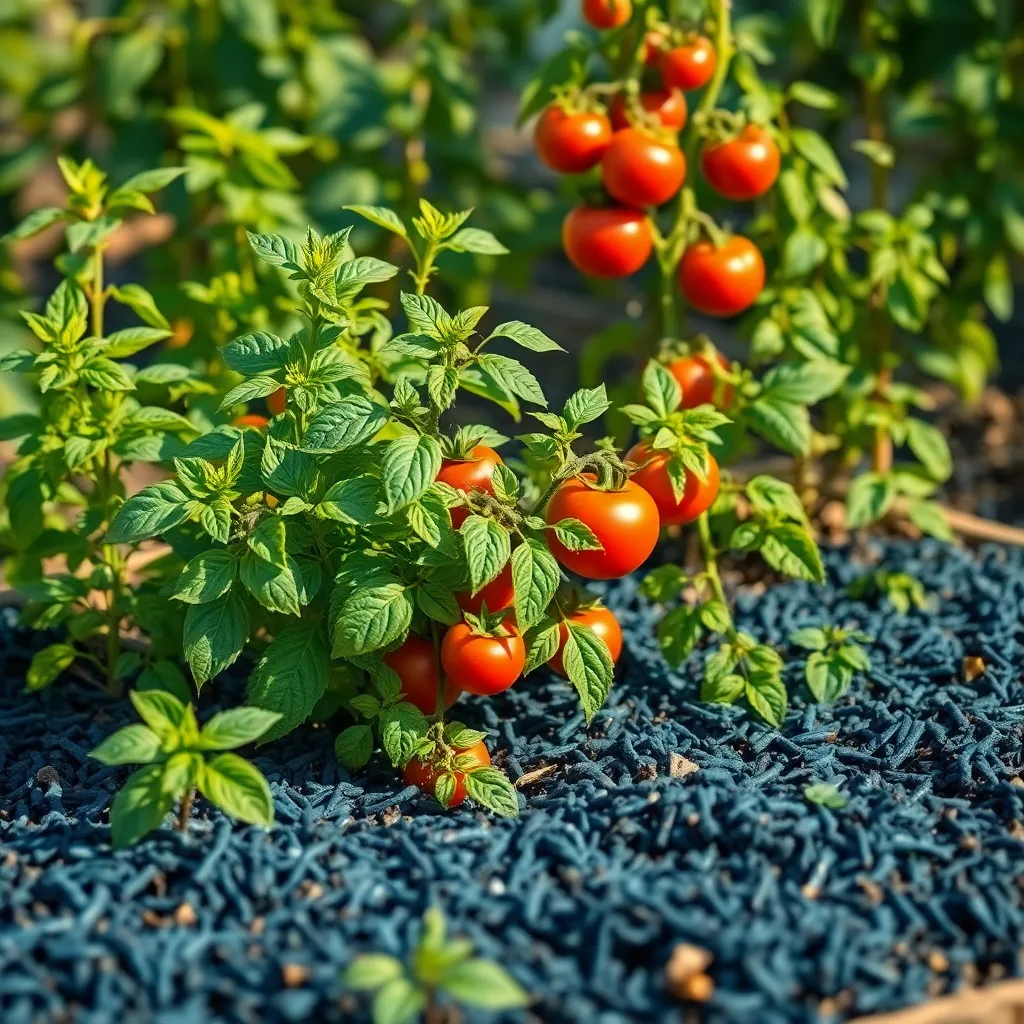
Companion planting is a strategic way to conserve water while maximizing garden productivity. By choosing plants that grow well together, you can create a microclimate that reduces evaporation and retains soil moisture.
Start by pairing deep-rooted plants with shallow-rooted ones to optimize water use. Deep-rooted plants like fruit trees can access moisture deeper in the soil, while shallow-rooted plants like strawberries benefit from the shade and reduced water loss.
Integrate herbs like thyme and oregano, which are known for their drought tolerance, with your fruit plants. These herbs not only help conserve water by covering the soil but also repel pests naturally.
For a more advanced technique, consider using a combination of mulch and ground cover plants. Mulching helps to keep the soil cool and moist, while ground cover plants like clover can prevent soil erosion and improve soil health.
Selecting Heat-Tolerant Fruit Shrubs
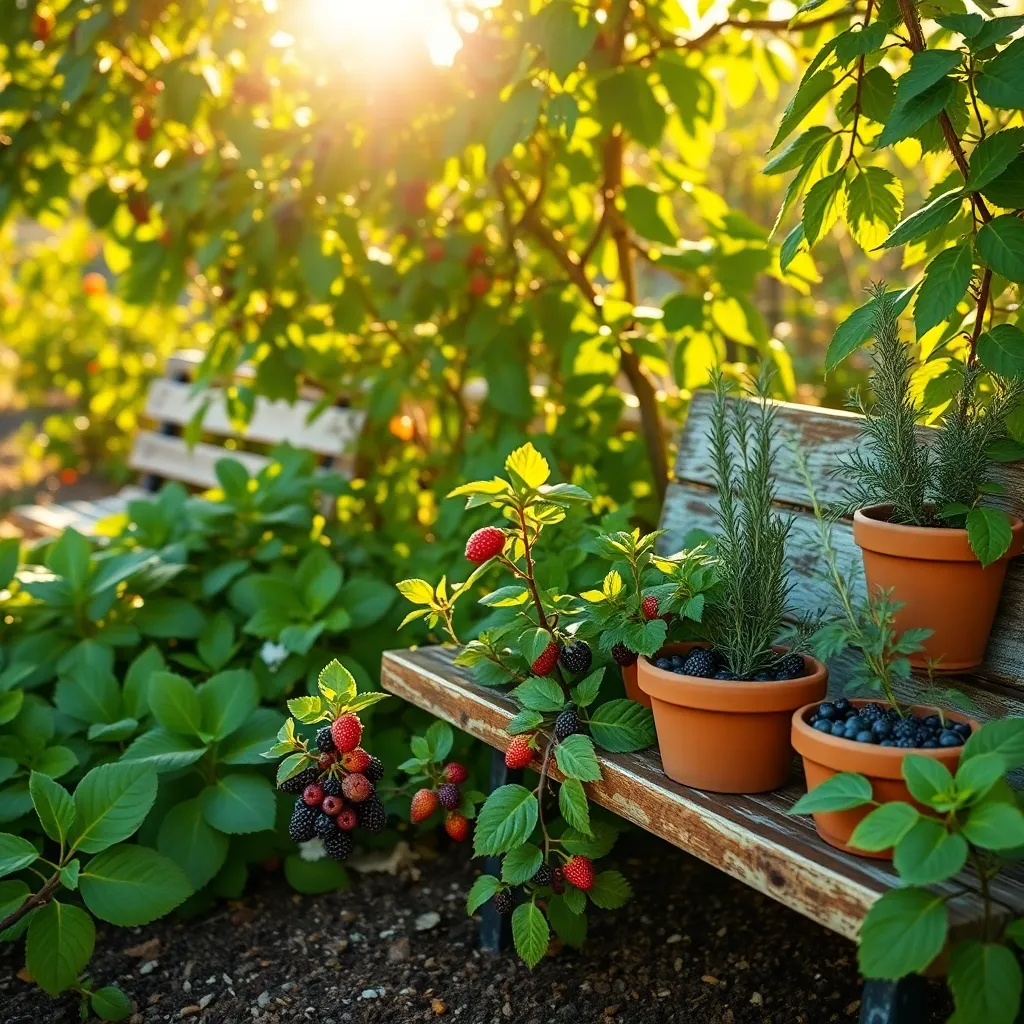
When selecting fruit shrubs for a low-water garden, focus on varieties that are naturally heat-tolerant. Fig trees (Ficus carica), for instance, thrive in hot climates and require minimal watering once established, making them an excellent choice.
It’s important to consider the soil type when planting heat-tolerant shrubs; well-draining soil is crucial. Amend heavy clay soils with organic matter to improve drainage, or opt for raised beds where you can control the soil composition more effectively.
For those looking to add more variety, pomegranate shrubs (Punica granatum) are another fantastic option. These plants not only tolerate high temperatures but also produce vibrant blooms and nutritious fruit with relatively low water needs.
If you’re an experienced gardener, consider implementing a drip irrigation system for optimal water efficiency. This method delivers moisture directly to the roots, reducing evaporation and ensuring your shrubs receive a consistent water supply.
Finally, remember that mulching around your shrubs can significantly reduce water evaporation and maintain soil temperature. Use organic mulch like bark or compost, which breaks down over time to enrich the soil, supporting the health of your heat-tolerant fruit shrubs.
Enhancing Soil with Water-Saving Techniques
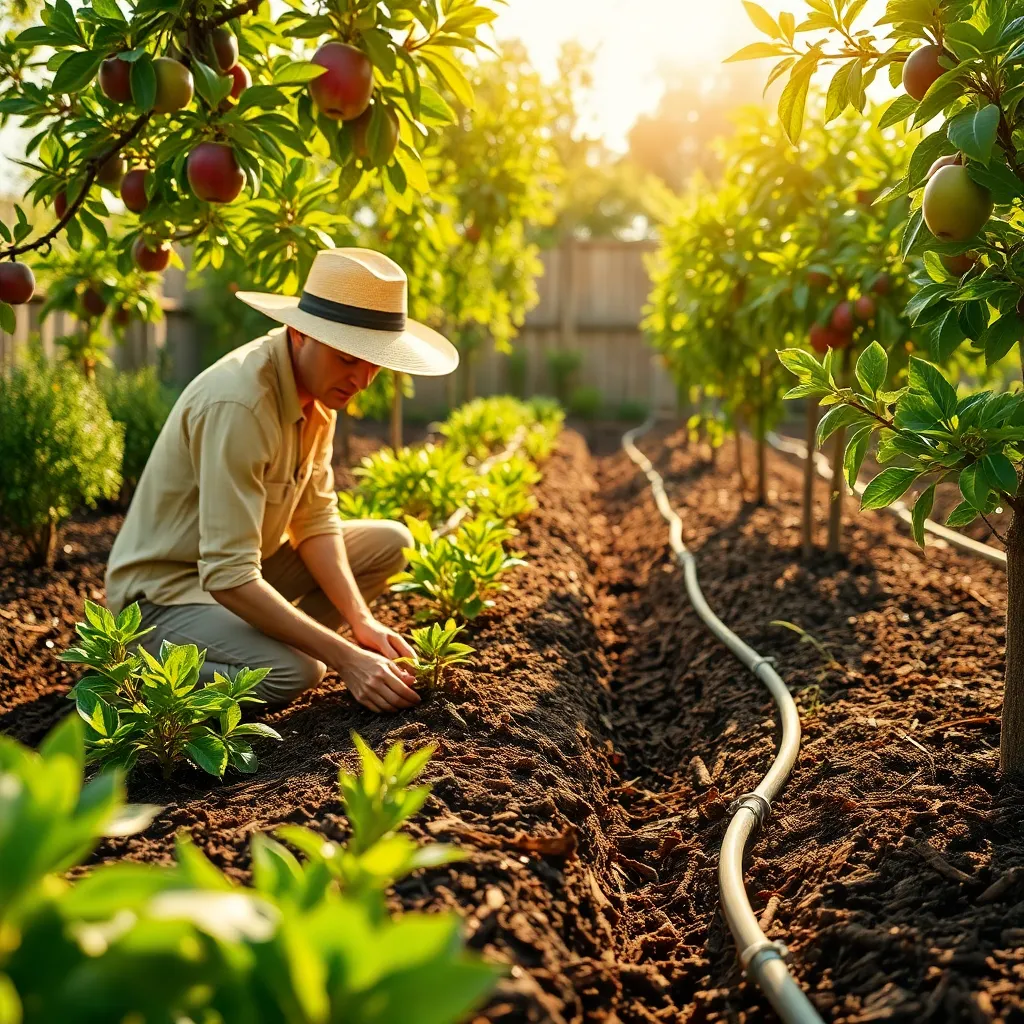
Enhancing soil with water-saving techniques begins with incorporating organic matter like compost, which improves the soil’s ability to retain moisture. By adding a 2-3 inch layer of compost to your garden beds and gently working it into the top few inches of soil, you create a sponge-like environment that reduces the need for frequent watering.
Another effective water-saving strategy is to apply a layer of mulch, such as straw or wood chips, over your garden soil. This not only helps to conserve soil moisture by reducing evaporation but also suppresses weeds that compete with your fruit plants for water and nutrients.
For gardeners looking to optimize their soil’s water retention capabilities, the use of soil conditioners like vermiculite or perlite can be beneficial. These materials enhance soil aeration and drainage while maintaining moisture levels, supporting healthy root growth in low-water conditions.
Consider implementing a drip irrigation system, as it delivers water directly to plant roots, minimizing waste and evaporation. Adjust the system to provide water during early morning or late afternoon, when temperatures are cooler, to maximize absorption and reduce water loss.
Pruning Practices for Less Water Use
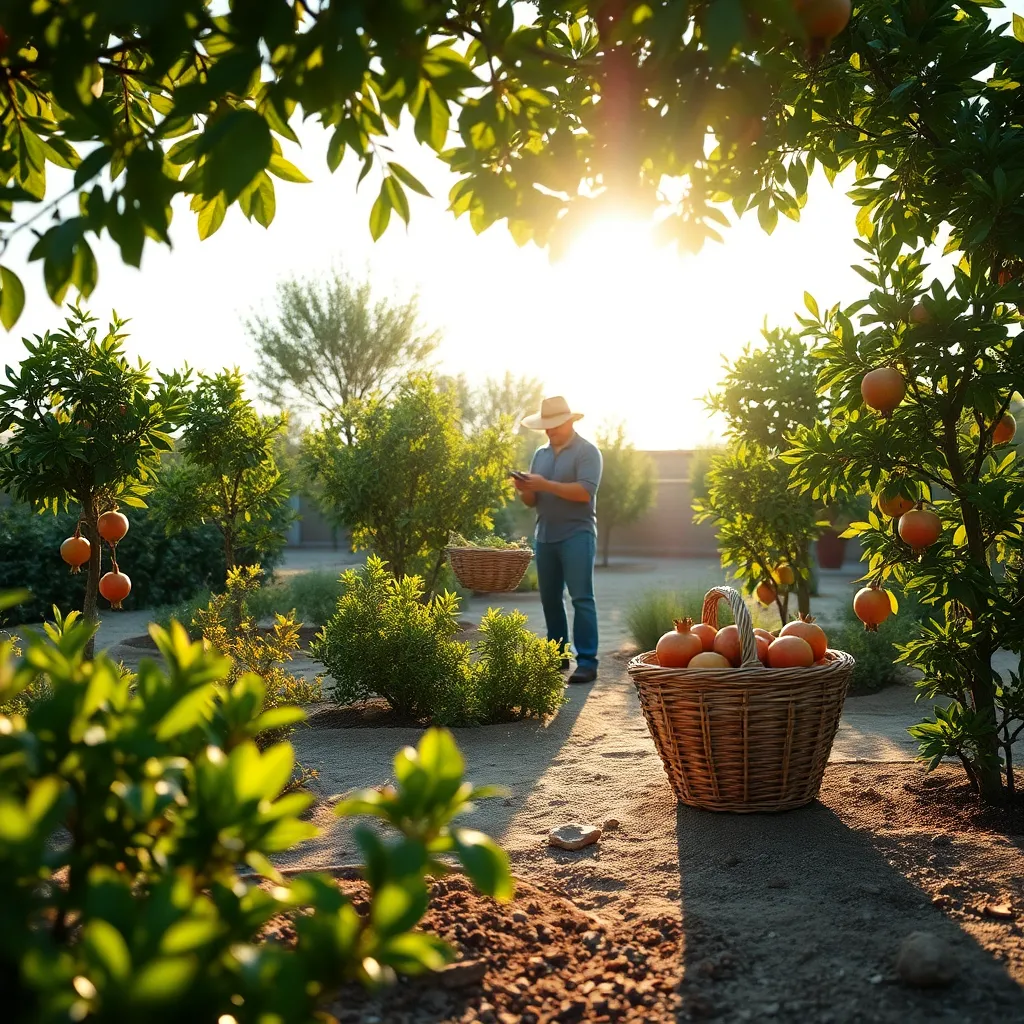
Pruning is an essential practice for maintaining fruit gardens that require less water, as it helps the plants use available moisture more efficiently. By removing dead or overcrowded branches, you can promote better air circulation and light penetration, which reduces the plant’s overall water needs.
To begin, focus on removing any dead, diseased, or damaged branches first, as these can drain the plant’s resources without contributing to growth. Use sharp, clean pruning shears to make clean cuts, ensuring faster healing and reducing the risk of infection.
For beginners, a simple rule of thumb is to prune during the plant’s dormant season, typically late winter or early spring, to minimize stress on the plant. This timing allows the plant to direct its energy towards new growth in spring, making it more drought-resistant.
Advanced gardeners can experiment with techniques like thinning cuts, which involve removing entire branches back to the trunk or main stem. This method not only saves water but also encourages the development of larger, healthier fruit by reducing competition for resources.
Here are some tips for effective pruning:
- Identify and remove suckers—those fast-growing shoots that drain energy.
- Trim back water sprouts, which are vertical shoots that often appear after heavy pruning.
- Shape the canopy to allow sunlight to reach the inner branches, reducing moisture loss through transpiration.
Implementing these techniques will not only conserve water but also enhance the vitality and productivity of your fruit garden.
Harvesting Tips for Arid Climates
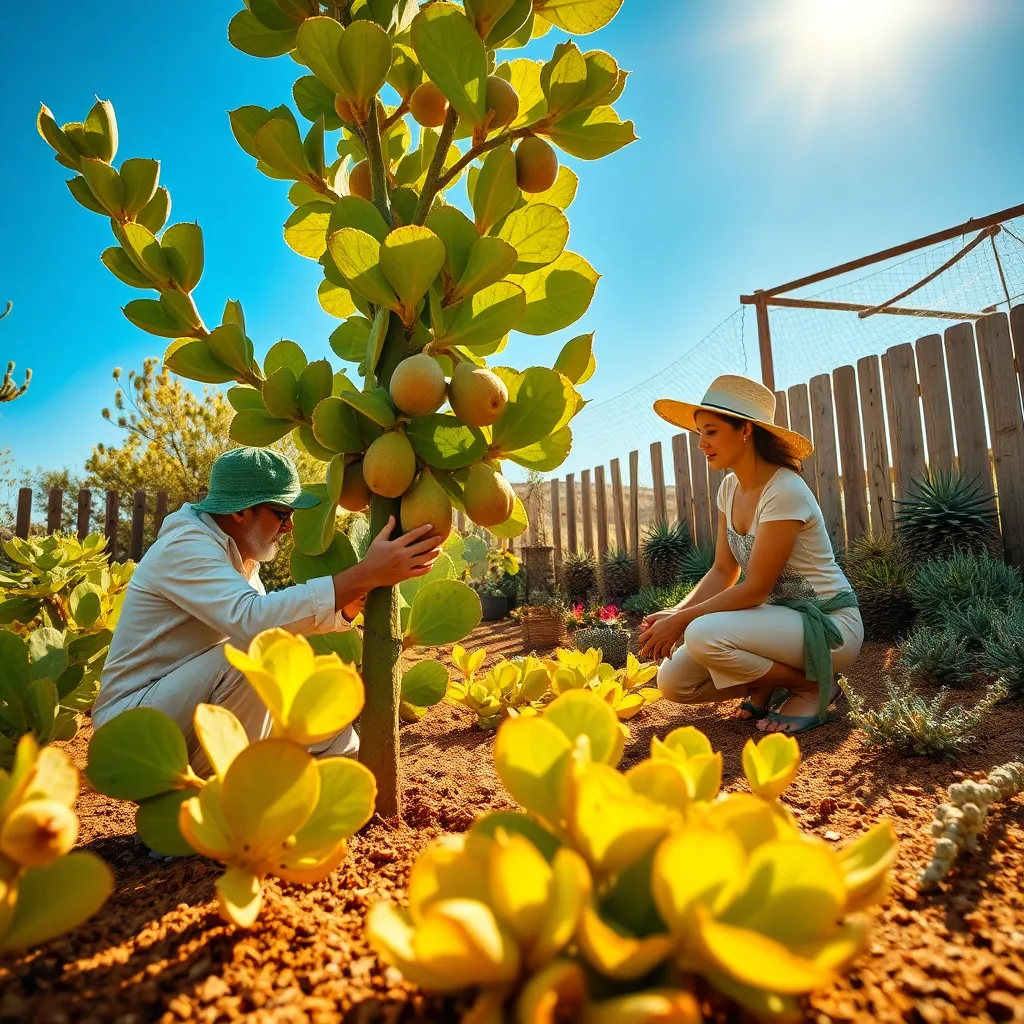
Timing your harvest in arid climates can significantly impact the quality of your fruits. Aim to harvest early in the morning when temperatures are cooler and plants are less stressed from the heat.
Ensure you are familiar with the ripening signs of each fruit to avoid harvesting too early or too late. For example, in dry climates, citrus fruits like lemons and oranges should be picked when they have developed full color and are slightly soft to the touch.
It’s crucial to consider the water needs of your plants as you approach harvest time. Reducing water a few weeks before harvest can often improve the flavor and sugar concentration in fruits like figs and grapes.
Mulching around your plants can help retain moisture and keep fruit roots cool, which is especially beneficial in arid regions. Use organic mulch, such as straw or wood chips, as it breaks down and enriches the soil over time.
For more advanced gardeners, implementing a drip irrigation system can ensure that plants receive consistent moisture without waste. This technique is particularly effective for deep-rooted plants such as pomegranates and olives, which thrive with minimal water.
Conclusion: Growing Success with These Plants
In wrapping up ’10 Low-Water Fruit Garden Inspirations,’ we’ve delved into the art of nurturing fruitful relationships that thrive even under challenging circumstances. We’ve explored concepts like resilience, adaptability, nurturing communication, prioritizing quality time, fostering mutual growth, embracing individuality, cultivating shared goals, practicing patience, investing in emotional resources, and celebrating small victories. These principles are not just about gardening; they echo the essence of cultivating strong, enduring relationships.
As you reflect on these insights, consider one immediate action: choose one concept and discuss it with your partner or a close friend today. This simple step can open doors to deeper understanding and connection.
Remember, nurturing a relationship is a journey. Bookmark this article now to revisit these inspirations whenever you need a reminder or boost. Let this resource be your guide as you cultivate a thriving partnership.
Looking ahead, envision your relationship blossoming with renewed strength and joy. With commitment and care, your journey together can flourish, even in the driest seasons. Embrace these insights and watch your relationship garden grow abundantly. 📌 Save this article to empower your relationship journey.

